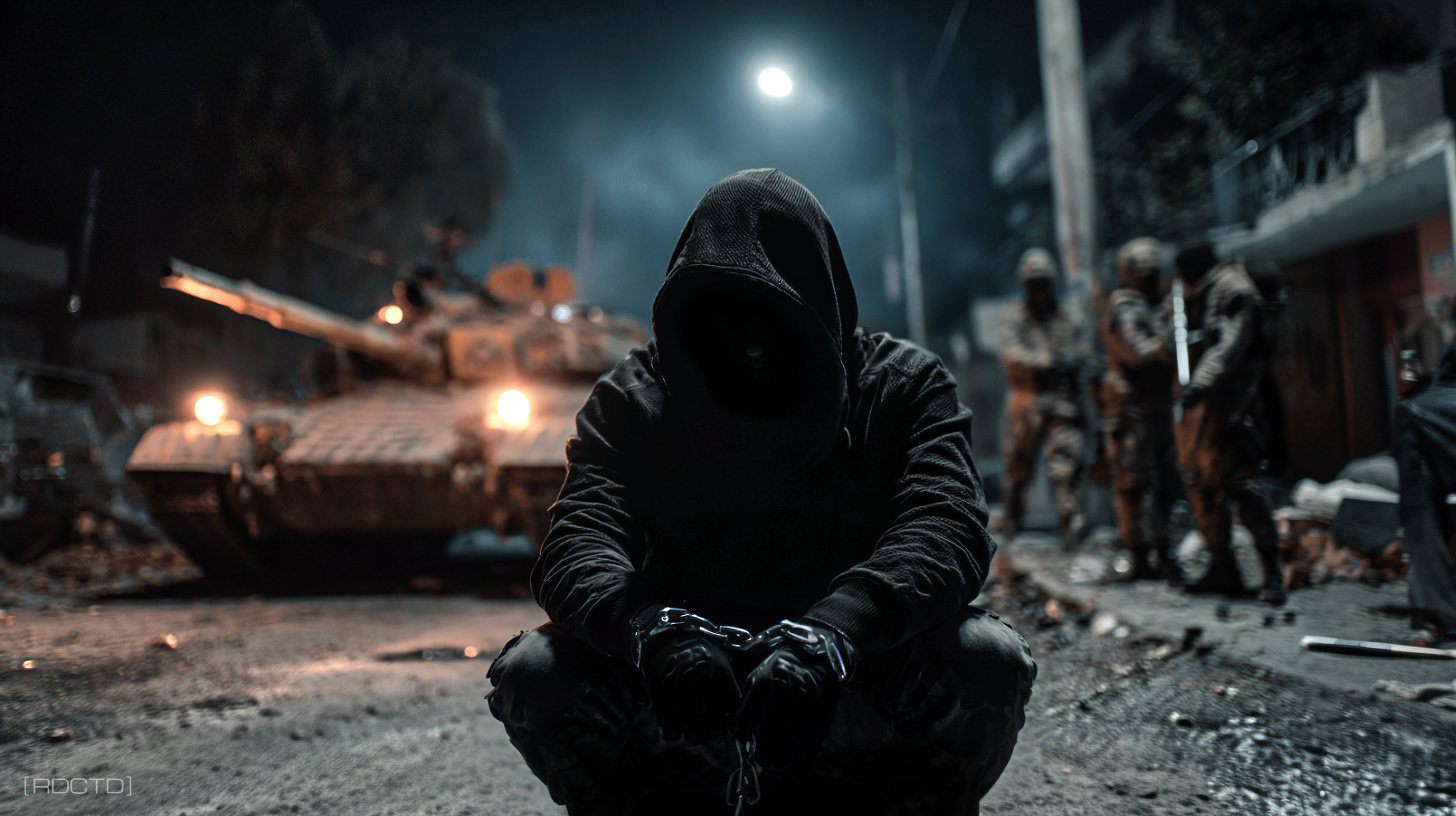 Adapting is the act of altering your actions and choices the instant circumstances change, recalibrating to new realities, and reshaping the course of your future with each decision you make in the moment.
Adapting is the act of altering your actions and choices the instant circumstances change, recalibrating to new realities, and reshaping the course of your future with each decision you make in the moment. Adaptiveness is the rare currency that you can use to buy something that’s even more rare and valuable – more time.
Adaptation is the situational recalibration of your path when confronted with change. Instead of passive acceptance, it’s an active rewrite of your trajectory, made moment by moment. Every new piece of information, every setback, every unexpected turn, forces you to decide whether you’ll resist the shift or bend with it. The latter is adaptation, instead of enduring or surviving events as they occur – you’re drafting a new version of your future with each choice you make. A version that is, for lack of a better word, better.
The adaptable bend the field until it works in their favor.
[ ADAPTIVE ]
![]()
Think of the future not as a fixed story, but as a fluid manuscript that you have control over. The initial draft may be laid out by your plans, training, or intentions, but adaptation is the pen in your hand. When the situation changes (through external pressure, failure, or opportunity), you’re revising sentences in real time. That means discarding passages that no longer fit and writing new ones that better align (optimization) with the reality you face.
Operatives in covert operations live by this truth like a directive. No matter how detailed and seemingly perfect the plan, contact with the field will always demand edits. Those who fail to adapt cling to an obsolete draft, while those who adjust create a new outcome altogether. In practice, it’s not just the words of the story that change – it’s the meaning of the story itself.
Every plan is temporary, but adaptability is permanent.
Technically, adaptation is decision-making under pressure. It draws on situational awareness, critical thinking, and a willingness to shift tactics without losing sight of the mission’s purpose. A skilled covert operative knows that adaptation isn’t random reaction; it’s structured improvisation. You keep your objectives intact but alter the route to them, much like rewriting a sentence to preserve its meaning while improving its clarity.
Each pivot in your actions sets a new course for your future, however small. Within moments or over time, these small pivots accumulate, gradually reshaping not just the outcome of single events but the entire trajectory of your life. Adaptation, then, is not just getting through the moment – it’s the deliberate shaping of the future version of yourself.
The future doesn’t belong to the fastest or the strongest, it belongs to the most adaptable.
There’s also a neurological component. The human brain is designed for pattern recognition, but adaptation requires breaking from familiar patterns when they no longer serve. This is where resilience and flexibility matter. In a firefight in the field, during business negotiations, or even in personal relationships, clinging to the old draft often leads to failure.
By recognizing when a pattern has broken down and accepting the need to rewrite, you’re effectively scripting a new ending before the ink of the last one has dried. Neurologically, this demands a conscious override of instinct – a willingness to pause, reassess, and then act decisively. That pause is where adaptability transforms raw reaction into intentional response.
Every disruption is just an unwritten line waiting for your edit.
Adaptation is also a safeguard against paralysis. Without it, uncertainty freezes action. With it, uncertainty becomes fuel. When you adapt, you move forward – not blindly, but with agility. Each adjustment builds momentum, and momentum itself becomes a form of protection against hesitation. Every micro-adjustment, every course correction, ensures your future is still being written by you rather than dictated by circumstances.
In operational tradecraft, this ability often marks the line between escape and capture, or mission success and failure. In daily life, it determines whether challenges define you or refine you. What separates the prepared from the unprepared is not the absence of fear, but the ability to keep rewriting in the face of it, choosing action over stagnation.
Adaptation is the only camouflage that works in every environment.
[ METHODOLOGY ]
![]()
This guide outlines the practical tradecraft of adaptation, showing how to turn uncertainty into structured improvisation. And ensure that every change in circumstance becomes an opportunity to reshape your trajectory.
![]()
I) Establish Baseline Awareness
Before making adjustment, you need to understand the environment as it truly is, not as you wish it to be. Awareness is the raw intelligence you gather. It’s the ground truth that allows you to see shifts before they overwhelm you. Without it you’re relying on assumptions that may be outdated.
Maintaining baseline awareness gives you the earliest warning signs of change and allows you to stay ahead of disruption. It’s the operative’s version of “left of bang” – acting before events spiral into crisis. By keeping your senses sharp and your mind uncluttered, you position yourself to adapt before adaptation becomes desperate.
![]()
II) Break the Old Draft
Adaptation starts with letting go. The draft you were operating from – whether it was a plan, expectation, or belief – served a purpose up to a point. But the moment reality shifts, that draft becomes outdated. Refusing to break it is like insisting on reading last decade’s map in a city that’s greatly changed.
Breaking the draft doesn’t erase your efforts, it liberates you from a dead-end path. This act clears mental space and frees resources, making you nimble enough to seize what’s still possible. Operatives who can cut ties with the obsolete are always faster to realign with what matters most.
![]()
III) Anchor to Mission Purpose
Without purpose, adaptation becomes chaos. The core mission – your “why” – is the compass that prevents improvisation from turning into drift. By anchoring to purpose, you ensure that every adjustment you make is aligned with something larger than the immediate disruption.
This anchoring transforms adaptation into disciplined movement. Instead of flailing in response to circumstances, you’re shaping them toward your end state. Mission purpose is the thread that ties together a series of pivots into a coherent story, one that carries you forward instead of scattering your energy.
![]()
IV) Generate and Select Options
Adaptation requires creativity under pressure. Once you accept that your old draft is broken, the next step is building new routes forward. The key is to avoid tunnel vision – when stress rises, the mind often narrows, but adaptation demands breadth.
Generating options isn’t about finding perfection – it’s about preserving agency. By creating choices, you keep control over the situation, forcing events to bend around your moves instead of cornering you. The operative who trains this skill becomes unbreakable, because no single disruption ever leaves them without a path forward.
![]()
V) Act, Assess, Adjust
Adaptation is never static; it’s an ongoing rhythm of movement and recalibration. Acting decisively is critical, but so is staying alert to the feedback your actions generate. Each move gives you fresh intelligence, which in turn informs your next pivot.
This loop builds resilience into your movement. By cycling through act–assess–adjust, you create a living feedback system that keeps you aligned with reality. The more you practice it, the less you fear mistakes, because every “error” becomes just another chance to refine your trajectory.
![]()
VI) Harden the New Draft
Adaptation isn’t just about the pivot – it’s also for stabilization afterward. Once you’ve found ground that holds, you need to reinforce it so that the next disruption doesn’t catch you off guard. Hardening the draft means making your new reality sustainable.
Hardened adaptations become stepping stones for future resilience. The more you reinforce, the stronger your foundation for the next shift. Over time, this habit does more than keep you alive – it makes you sharper, calmer, and more prepared to thrive in uncertainty.
![]()
Adaptation is a way of staying ahead – never frozen, never passive, always rewriting. In the field or in daily life, this discipline transforms uncertainty from threat into fuel and keeps your future firmly under your control.
To adapt is to weaponize change itself.
[ FINAL ]
![]()
Adapting is authorship. To adapt is to seize the pen from chaos and continue writing, even when the story takes a turn you didn’t plan. It’s the understanding that the future isn’t waiting for you at the finish line, fully written, but unfolding as you act. Each decision, each pivot – ink on the page.
Those who adapt write futures worth living because they refuse to let chance, failure, or disruption be the final editor of their story. Adaptation is therefore not a defensive act, but a creative one – shaping, not reacting to the world.
![]()
// Adaptation is agility applied to thought before movement.
![[RDCTD]](https://rdctd.pro/wp-content/uploads/RDCTD-Covert-Operative-Tradecraft-Guide-LOGO-tk.png)
![[RDCTD]](https://rdctd.pro/wp-content/uploads/RDCTD-Covert-Operative-Tradecraft-Guide-LOGO-mobile.png)


